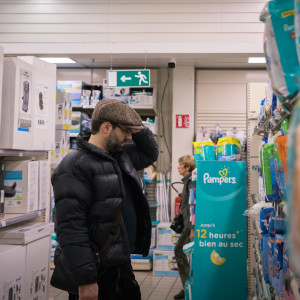Project managers, marketers, and developers tend to care about translator tools in the same way they care about graphic design software. As long as the talent applying the technology delivers an acceptable output, the exact instruments they use seem largely irrelevant.
But in a process as interconnected as mobile app or website translation, all it takes is one errant output to remind everyone how the success or failure of each individual impacts the entire team. So when translators start raving about how much better their work could be with visual context, it’s actually in the best interest of project managers, marketers, and developers to listen up.
Why Linguists Love Visual Context
Visual context is not some shiny new toy; it’s a fundamentally different way to translate. Instead of starting from isolated text in spreadsheet cells, translators get to see strings through the eyes of their eventual audience.
This visual feedback immediately confirms intended meanings, formatting requirements, and a host of other linguistic subtleties at the heart of an accurate translation. As a result, translators spend less time waiting for clarifications from teammates and more time processing new strings. And in a profession where compensation is defined by per-word rates, that efficiency ultimately amounts to shorter workdays or fatter paychecks.
Speed doesn’t come at the expense of quality, either. Empowering translators to answer their own questions increases the odds of translating strings correctly on the first try. And even if incorrect translations are passed along to proofreaders, visual context gives them the best possible perspective for detecting errors prior to publication.
The Project Manager’s Secret Weapon
Successful localization strategies depend on a project manager who can eliminate any obstacles standing in the way of accurate and timely translations. For most teams, the majority of those obstacles can be traced back to an issue of ambiguity.
When translators don’t have all the information they need, they are forced to either pause their work to ask clarifying questions or submit a “best guess” translation for reviewers to settle. The first scenario is guaranteed to incrementally delay project delivery, and the second significantly raises the risk of errors that will need to be resolved at a later date.
Project managers have traditionally addressed this ambiguity by manually adding contextual notes to source text spreadsheets, or resigning themselves to answering dozens of emails each week from confused translators. In either case, though, their efforts represent hours of wasted activity that could have been (at least partially) eliminated via visual context.
By arming translators with a tool that helps them independently improve baseline speed and accuracy, project managers can ultimately allocate more of their time and attention toward planning deeper process improvements.
The Marketer’s Trusted Shield
Marketers often approach translation with mixed feelings. They’re eager to expand their addressable audience, but they’re simultaneously worried about whether content will get to market on time and deliver the desired results.
Luckily for marketers prone to promising imminent deadlines, we already know visual context is designed to promote translation speed. Lengthy linguistic debates are proactively prevented and second attempts are rarely required. But this innovative translator tool can also be a meticulous brand manager.
Teams who give their translators and reviewers a comprehensive perspective of what the customer will see greatly reduce their risk of watching embarrassing errors and incompatible elements slip into production. And when visual context is tied to linguistic assets like glossaries and style guides, companies can feel confident that their content speaks in the same voice across every language.
The Developer’s Dependable Ally
Website and app developers definitely appreciate the value of localization, but they can’t help but measure the associated effort in terms of the time it takes away from their product maintenance, development, and innovation duties.
The most frustrating scenarios developers face tend to arise from a conflict between linguistic accuracies and UX realities. Translations that are grammatically correct may not necessarily fit within the interface or align with the intended function. A German translation that contains significantly more characters than its English equivalent, for example, may violate the formatting requirements of a mobile app navigation menu.
As a result, developers face a plight similar to that of project managers. They can either manually describe the visual context and functional requirements before translators begin, or report and help resolve errors after they happen. Either way, their time and morale will be drained.
The more rewarding scenario would be automatically generating visual context for each translation job from the start. That way, once translations are approved by linguistic experts, developers can feel confident that the strings they receive can be quickly uploaded with minimal changes made to content or code.










